The Least Grebe is the smallest grebe in North America, and occupies portions of southern Texas, although most of its range lies south of the U.S. The small size of the Least Grebe, and its ability to take off from water more rapidly than other grebes allows it to use even small, temporary bodies of water.
Least Grebes form pairs during the breeding season, family groups in the fall, and may occur in small flocks in the winter. One source of mortality for Least Grebes in Texas is being trapped in ice when ponds freeze over, making them vulnerable to predators.
Least Grebe — Length: 9 inches, Wing span: 11 inches
On this page
Breeding Male
The Least Grebe is very small with grayish plumage and yellow eyes. Blackish crown and throat. Length: 9 in. Wingspan: 11 in.
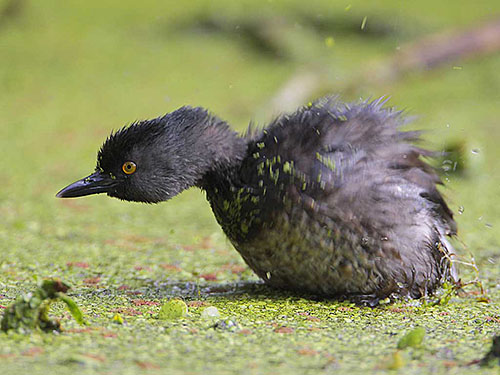
Photograph © Greg Lavaty.
Female
Sexes similar.
Photos
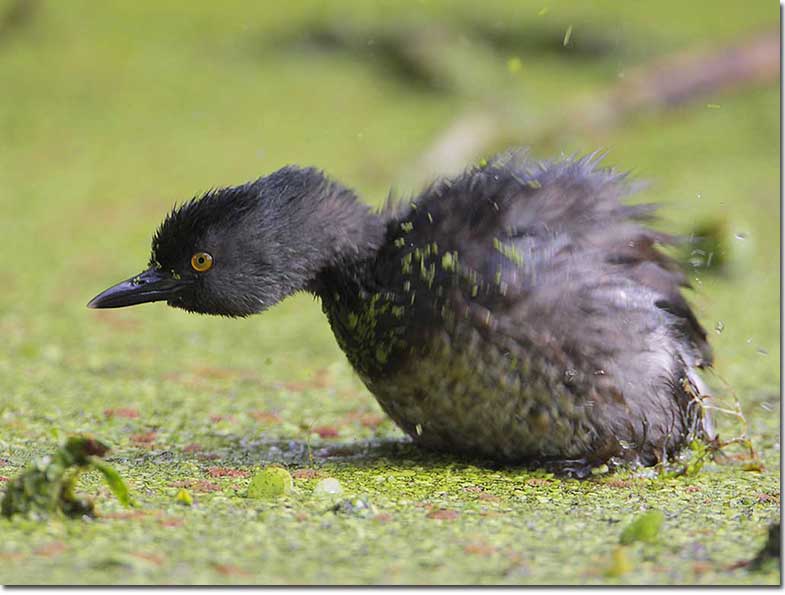
Least Grebe in an aggressive posture. Photograph © Greg Lavaty.
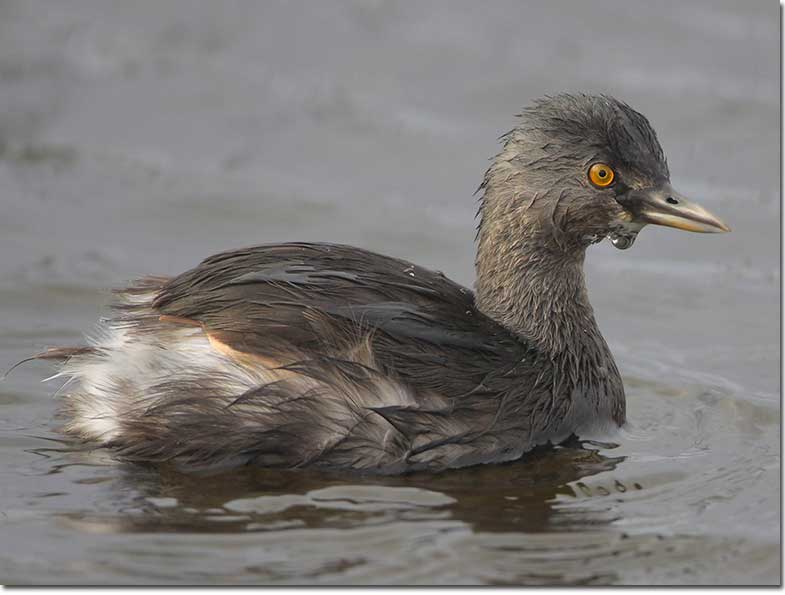
The body shape and behavior is clearly grebe-like. Might be confused with the Pied-billed Grebe, which is larger and has a different shape to the bill. Photograph © Greg Lavaty.
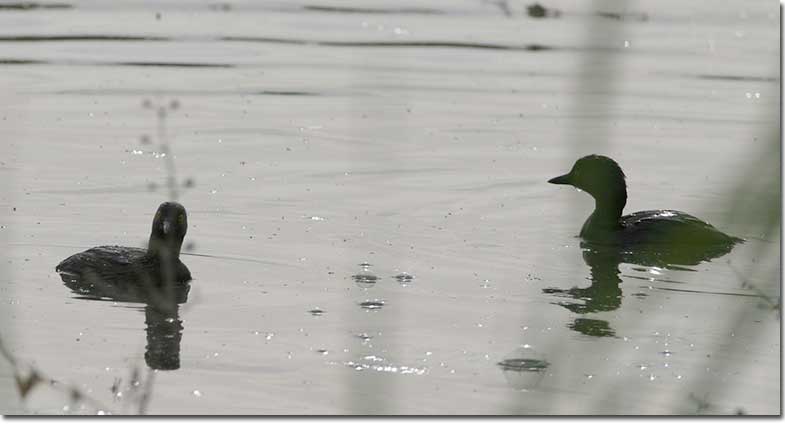
Pied-billed Grebes (below) can appear as black as the Least Grebe, but the shape of the billis different. Note the thinner look to the bill of the Least Grebes in silhouette above, compared to the shape of the Pied-billed Grebe. Photograph © Greg Lavaty.

Seasonal change in appearance
Least Grebes are somewhat dingier and browner in the winter, and have whitish throats.
Juvenile
Juveniles resemble adults but are browner.
Habitat
Marshes and ponds.
Diet
Insects.
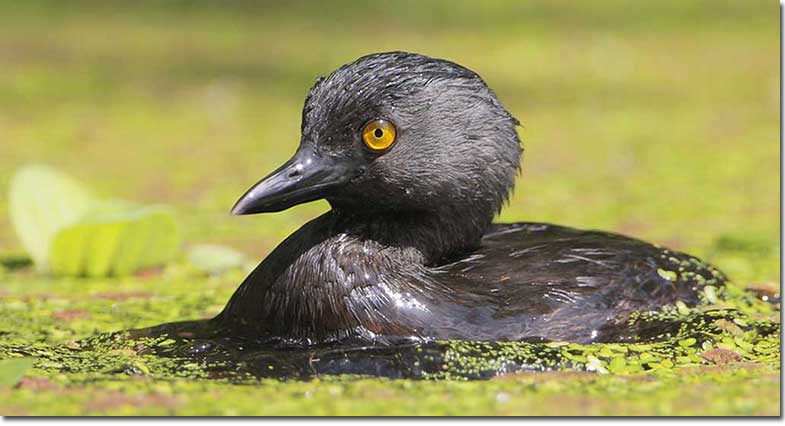
Photograph © Greg Lavaty.
Behavior
Forages by diving and swimming.
Range
Resident in south Texas and Mexico, as well as Central and South America.
Fun Facts
Almost nothing is known about the courtship behavior of Least Grebes.
Pied-billed Grebes are sometimes aggressive towards Least Grebes.
Vocalizations
The most common call is a trill of varying speed.
Similar Species
Other grebes are larger and lack bright yellow eyes.
Nesting
The nest is a pile of decaying vegetation in the water.
Number: 4-6.
Color: White.
Incubation and fledging:
– Young hatch at 21 days.
– Young fledge (leave the nest) shortly after hatching but remain with the adults for some time.

